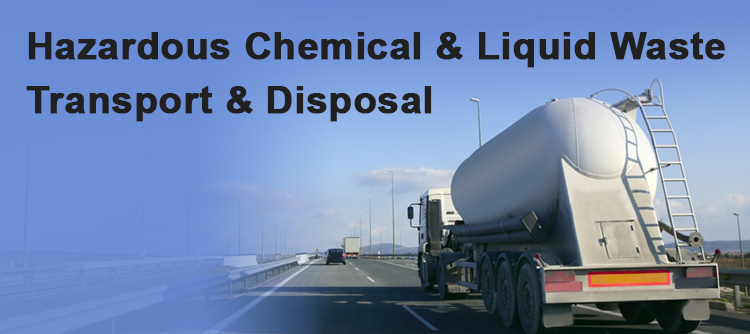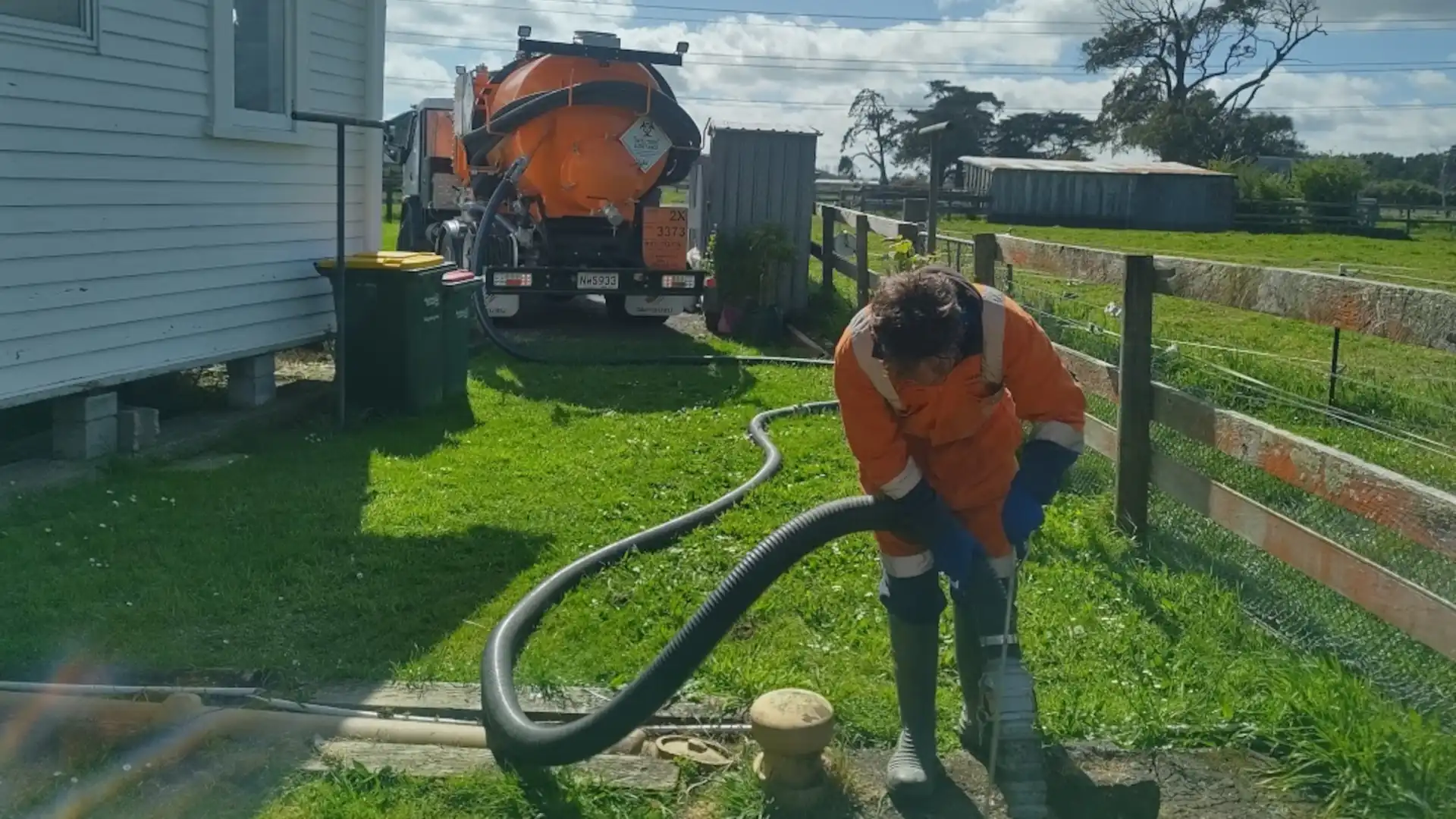Innovative Industrial Wastewater Treatment Solutions: Safeguarding the Atmosphere
Understanding the Comprehensive Process of Liquid Waste Disposal: Finest Practices and Environmental Effect Considerations
The administration of liquid garbage disposal is a complex problem that requires a thorough understanding of numerous finest practices and their linked environmental impacts. From the kinds of liquid waste produced to the approaches used for collection, therapy, and last disposal, each action plays an essential function in protecting environments and public health and wellness. As regulatory criteria progress and technology advances, the discussion around these processes comes to be progressively essential. What ramifications do these changes hold for future sustainability initiatives, and how can stakeholders ensure that they are appropriately attended to?
Types of Fluid Waste
Recognizing the various sorts of fluid waste is important for effective monitoring and disposal techniques. Fluid waste can be extensively categorized into several kinds, each requiring unique handling and therapy strategies.
Industrial fluid waste typically includes harmful materials, consisting of heavy metals, solvents, and chemicals, produced during making processes. These wastes demand strict regulative conformity to shield human health and the atmosphere. Domestic liquid waste mostly describes wastewater created from houses, including sewage and greywater, which, although less harmful, can still position considerable threats if poorly taken care of.
Agricultural fluid waste, consisting of runoff from farms, typically has plant foods and chemicals that can lead to environmental degradation if not treated effectively. Clinical fluid waste, produced from health care centers, includes polluted liquids such as bodily fluids and chemicals, calling for specialized disposal methods to stop infection and ecological contamination.
Last but not least, oil and oil waste, typically produced by dining establishments and auto sectors, can trigger serious obstructions in sewer systems if not managed properly. Understanding these categories facilitates targeted approaches for therapy, compliance with regulations, and effective disposal methods, inevitably advertising environmental sustainability and public wellness safety and security.

Collection Methods
Reliable collection techniques are essential for the correct administration of liquid waste, making certain that it is gathered securely and effectively prior to treatment or disposal. Numerous methods are used depending upon the kind of fluid waste produced, the quantity, and the particular features of the waste.
One typical approach is the use of committed collection storage tanks or sumps, which are made to catch fluid waste at the source. These systems commonly incorporate pumps that assist in the transfer of waste to bigger storage containers or therapy centers. Furthermore, mobile collection devices equipped with vacuum modern technology are employed in circumstances where waste is created intermittently or in hard-to-reach places.
For commercial settings, closed-loop systems can efficiently decrease leaks and spills, permitting for the recovery and reuse of liquid waste. It is likewise vital to train workers on correct collection methods to mitigate dangers connected with unsafe substances.
Additionally, executing regular upkeep schedules for collection devices makes sure ideal efficiency and security. The combination of innovative tracking systems can boost collection efficiency by giving real-time information on waste levels and prospective threats. Generally, efficient collection methods are fundamental to sustainable liquid waste administration practices.
Therapy Processes
Treatment processes play a vital function in the management of liquid waste, changing potentially unsafe products right into safe effluents or multiple-use sources - liquid waste disposal. These processes can be broadly classified right into physical, chemical, and organic methods, each customized to attend to details contaminants present in the waste stream
Physical therapy techniques, such as sedimentation and filtration, work by removing put on hold solids and particulate issue. These methods are commonly the primary step in the treatment chain, properly minimizing the tons on subsequent procedures. Chemical treatments entail the use of reagents to neutralize damaging materials, precipitate heavy metals, or oxidize organic contaminants, therefore improving the safety and security of the effluent.
Biological treatment procedures, including activated sludge systems and anaerobic digestion, profit from the natural capacities of bacteria to deteriorate raw material. These methods are especially reliable for wastewater including biodegradable pollutants. Advanced treatment innovations, such as membrane purification and advanced oxidation processes, are increasingly used to achieve greater degrees of filtration.
Incorporating a combination of these therapy approaches not only guarantees conformity with governing standards however additionally advertises environmental sustainability by recovering useful sources from fluid browse around here waste.
Disposal Options
How can organizations make sure the secure and responsible disposal of liquid waste? Efficient disposal choices are critical for safeguarding click here now public health and wellness and the atmosphere. The key methods include land disposal, treatment, and incineration complied with by discharge right into local wastewater systems.
Land disposal includes the cautious control of fluid waste in marked land fills, ensuring that it does not leach right into bordering dirt or water. Incineration, on the other hand, subjects liquid waste to heats, converting it into ash and gases, which require proper filtration to reduce emissions. This method appropriates for contaminateds materials that can not be dealt with with conventional means.
In cases where liquid waste can be treated, companies might choose for biological or chemical therapy processes to reduce the effects of damaging components before releasing the treated effluent into community systems. This course commonly straightens with regulative requirements, making certain that the effluent fulfills security standards.
Inevitably, organizations must perform complete assessments of each disposal alternative to identify its viability, taking into consideration aspects such as waste composition, governing compliance, and potential dangers to health and the setting. By selecting ideal disposal techniques, companies can add to a liable waste management approach.
Environmental Impact
The ecological effect of fluid waste disposal is an essential consideration for organizations seeking to lessen their eco-friendly impact. Additionally, the discharge of neglected or inadequately treated waste into surface waters can result in eutrophication, leading to oxygen exhaustion and the succeeding fatality of fish and various other microorganisms.

To reduce these impacts, companies have to take on ideal methods such as executing rigorous waste treatment procedures, advertising recycling and reuse, and adhering to regulatory criteria. By taking an aggressive technique to liquid waste management, entities can significantly reduce their ecological footprint while supporting lasting advancement objectives. Eventually, an extensive understanding of the environmental impacts connected with fluid waste disposal is essential for educated decision-making and accountable stewardship of natural sources.
Final Thought
Efficient management of fluid waste is essential for guarding environmental stability and public wellness. Ultimately, a detailed understanding of fluid waste disposal not only reduces ecological influences yet also fosters a commitment to accountable resource administration and ecological stewardship.
The monitoring of fluid waste disposal is a complex issue that requires a detailed understanding of various best practices and their associated ecological impacts. From the kinds of fluid waste generated to the techniques used for collection, treatment, and final disposal, each action plays a critical role in protecting environments and public wellness.The ecological effect of fluid waste disposal is an important factor to consider for companies looking for to lessen their ecological impact. Inevitably, a comprehensive understanding of the environmental influences linked with fluid waste disposal is redirected here essential for informed decision-making and responsible stewardship of all-natural sources.
Eventually, a detailed understanding of liquid waste disposal not only minimizes ecological effects however also fosters a dedication to accountable resource monitoring and ecological stewardship.